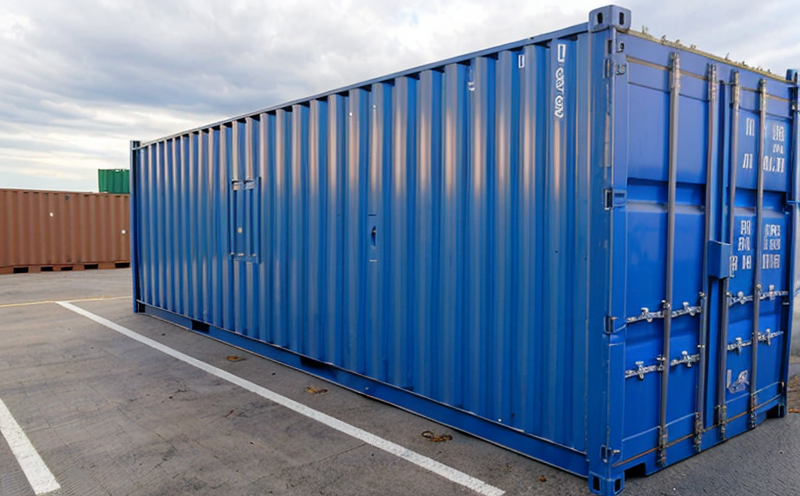ISO 899 Creep Testing of Plastic Storage Plastics
The ISO 899-1 standard specifies a method for determining the creep properties of plastic materials, which are crucial in evaluating their long-term mechanical performance. This test is particularly relevant when assessing plastic containers and storage systems that will be subjected to prolonged loading conditions over extended periods.
Creep testing measures how much a material deforms under constant stress as time progresses. In the context of plastics used for storage, this information can help predict potential failure modes due to environmental factors such as temperature changes or chemical exposure. By understanding creep behavior, manufacturers and quality managers can ensure that their products will withstand real-world conditions without compromising safety or performance.
For instance, consider a large container used in the chemical industry. If it exhibits significant creep over time, even minute amounts of deformation could lead to leaks or structural integrity issues, posing risks not only to the contents but also to personnel handling and transporting these containers.
The test involves placing a specimen under a defined load and measuring its displacement at regular intervals until a predetermined strain is reached. The results provide valuable insights into the material's ability to maintain shape under sustained loading conditions. This information is essential for ensuring that storage solutions meet regulatory requirements while also enhancing product reliability.
Understanding creep behavior helps in selecting appropriate materials for various applications, from simple household containers to complex industrial tanks and drums. It ensures that manufacturers can design products that not only pass initial strength tests but also endure long-term service without degradation.
In summary, ISO 899-1 creep testing plays a critical role in the development and quality assurance of plastic storage solutions. By providing detailed data on material behavior under stress over time, this test supports informed decision-making in both R&D and production environments.
| Industry | Application |
|---|---|
| Aerospace | Evaluation of fuel and hydraulic fluid storage tanks for durability. |
| Chemical | Determination of compatibility with various chemicals used in storage. |
| Pharmaceuticals | Evaluation of drug container integrity under prolonged loading conditions. |
Applied Standards
The ISO 899-1 standard is widely recognized and applied across numerous industries for creep testing. It ensures consistent, reliable results that are comparable globally. Compliance with this standard is often a requirement for products intended to be sold in countries adhering to International Organization for Standardization (ISO) guidelines.
Other relevant standards include ASTM D695-18 and EN 14327:2017, which cover similar aspects of creep testing but may have slight variations depending on the specific requirements of different jurisdictions. These standards provide detailed protocols for preparing specimens, applying loads, recording data, and interpreting results.
It is important to note that while ISO 899-1 focuses primarily on creep behavior, other tests like tensile strength or impact resistance might also be necessary to fully assess a plastic storage container's suitability. A comprehensive quality assurance program should incorporate multiple testing methods tailored to the specific needs of each application.
By adhering to these internationally recognized standards, manufacturers can ensure that their products meet stringent quality and safety requirements, thereby building trust with customers and regulatory bodies alike.
Industry Applications
| Industry | Description of Application |
|---|---|
| Aerospace | Evaluating the durability and reliability of fuel tanks. |
| Chemical | Determining compatibility with various chemicals used in storage. |
| Pharmaceuticals | Evaluating drug container integrity under prolonged loading conditions. |
Why Choose This Test
- Predict long-term performance of plastic storage containers.
- Evaluate material durability under sustained loading conditions.
- Ensure compliance with international standards and regulations.
- Identify potential failure modes early in the design process.
- Demonstrate superior quality to clients and regulatory bodies.





